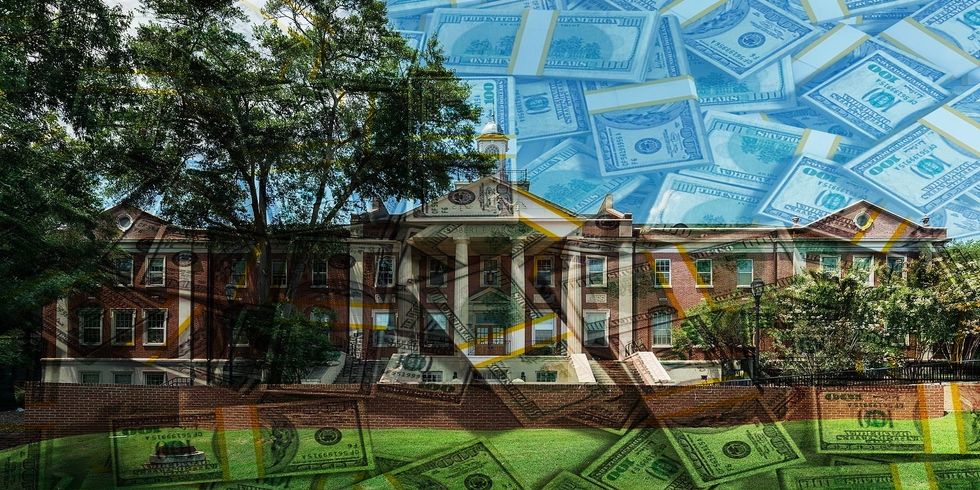According to the University of Georgia Fact Book, UGA earned 53.1% of its revenue for fiscal year 1987-1988 from state appropriations. By 2007-2008, that number had fallen to 39.0%. For 2017-2018? 27.3. Meanwhile, student tuition and fees have risen as percentage of total revenue over the same interval from 10.9, to 22.8 to 31.0%.
One might think that this ever-increasing student share of funding is the natural result of rising enrollment numbers. Yet while the student body has increased by 13% in the last ten years, tuition (adjusted for inflation) has risen by a startling 71%. So, without a doubt, student expenses have been outpacing school growth, and the state's responsibility to its flagship institution has become more and more negligible. Why?
The Center on Budget and Policy Priorities, a "nonpartisan research and policy institute," puts this phenomenon into a national perspective. State spending on public higher education has dipped by billions since 2008. Attributing this decline to the recession of the late 2000s, the CBPP found that lacking state revenues, crippled by economically wounded and less-taxable populations, were buoyed disproportionately by cuts in public spending. Simultaneously, enrollment in two- and four-year colleges rose sharply from 2008-2011, a development that presented an opportunity for schools to fill their reduced coffers and, unsurprisingly, ran in tandem with rising tuition costs across the country (UGA's increase in the past decade is 35% higher than the national average). Yet this didn't close the funding gap entirely, as only about half of teaching costs are currently covered by states. Indeed, faculty layoffs, scholarship cuts, and trimmed course catalogues all lay in the wakes of universities plowing forward through the frictional network of economics, government budgeting, and public education. I highly recommend reading the CPBB article linked above. Its statistics and analyses are truly illuminating.
The news isn't entirely bad, however. At least for most states. From 2016-2017, Georgia increased its state funding of public colleges by almost 5%, ranking 11th among states that are finally finding their subsidy sea legs amid the receding waters of the downturn a decade ago. Further, tuition at UGA actually decreased by about 3% from 2016-2018, and state and institutional aid covered more of total student fees/tuition in 2018 than in 2008. So, that's good.
Still, these trends illuminate the darker side of higher education, a facet well-understood by students across the country, whose ability to pay for college has suffered a multi-pronged attack for decades now. The most recent data does seem encouraging, but with rumblings of the next recession looming, old patterns may well re-emerge.












